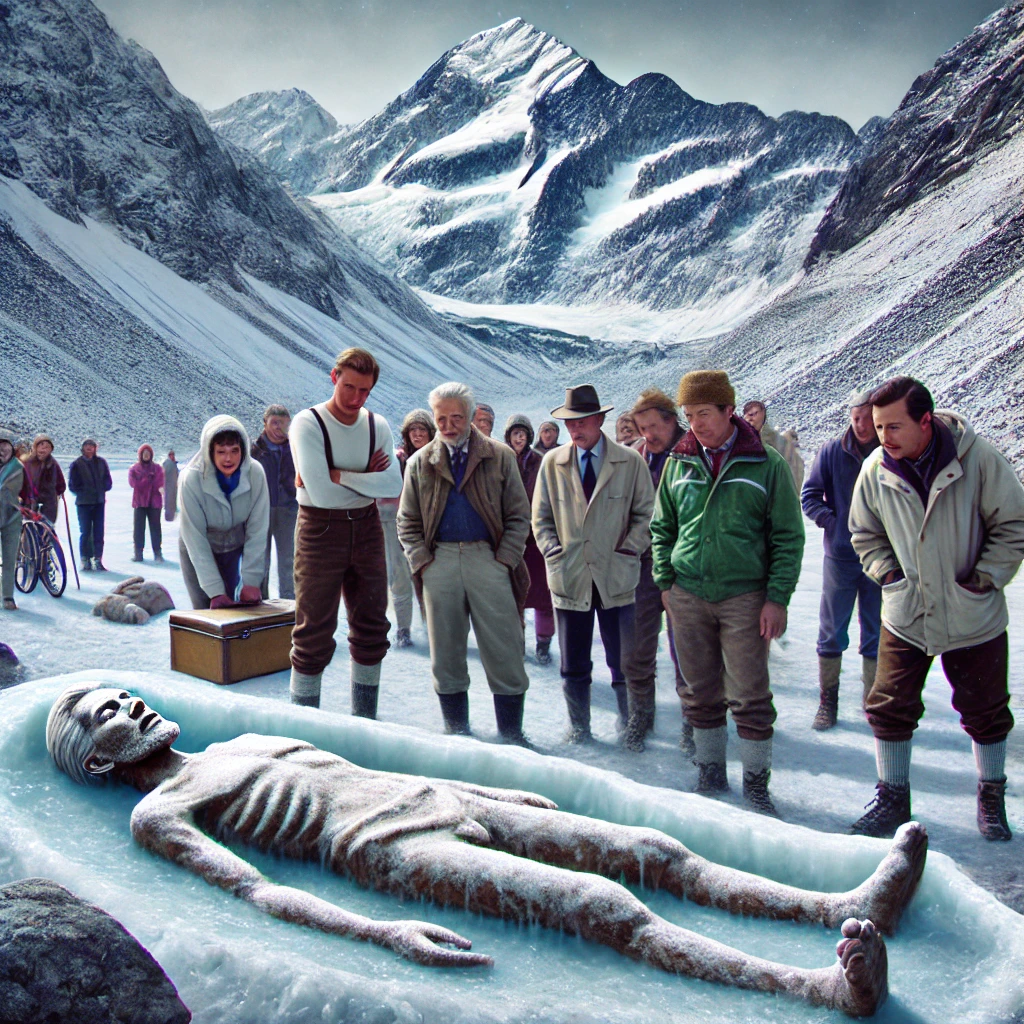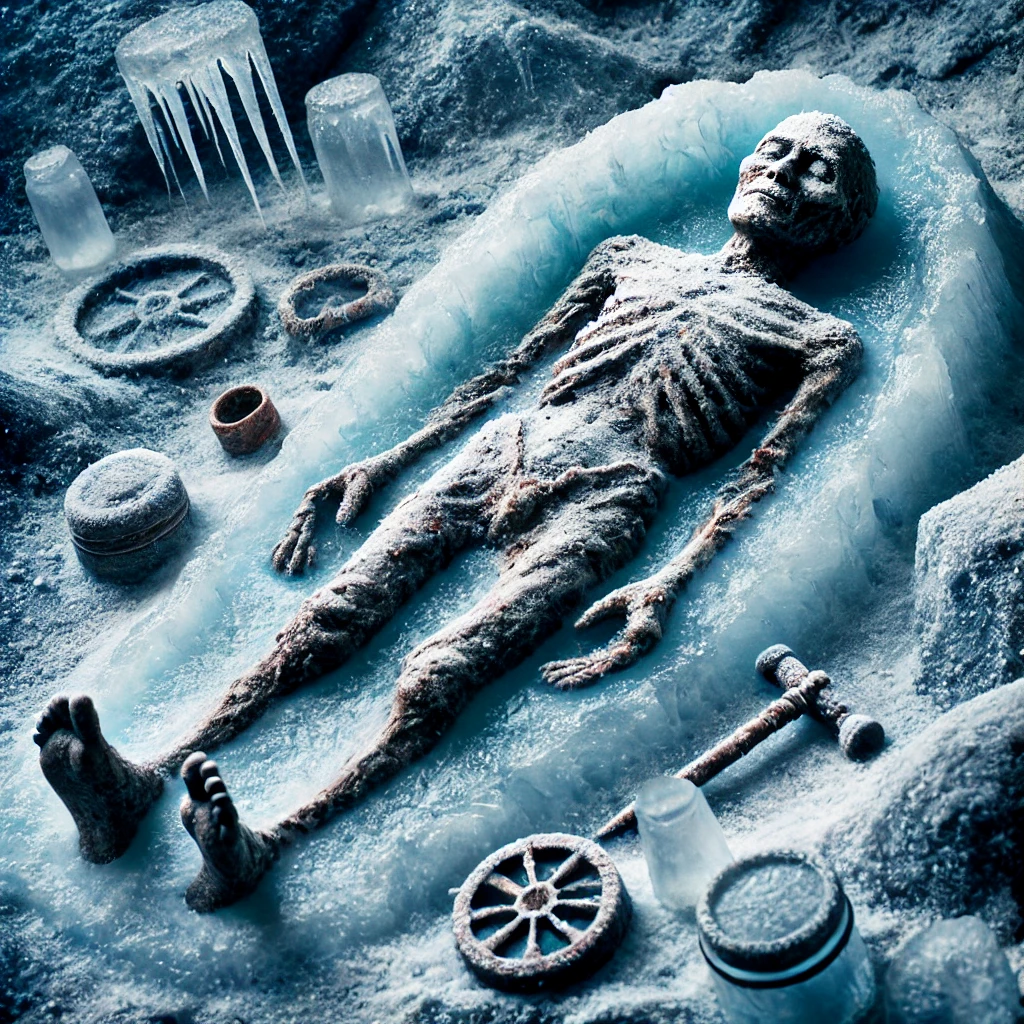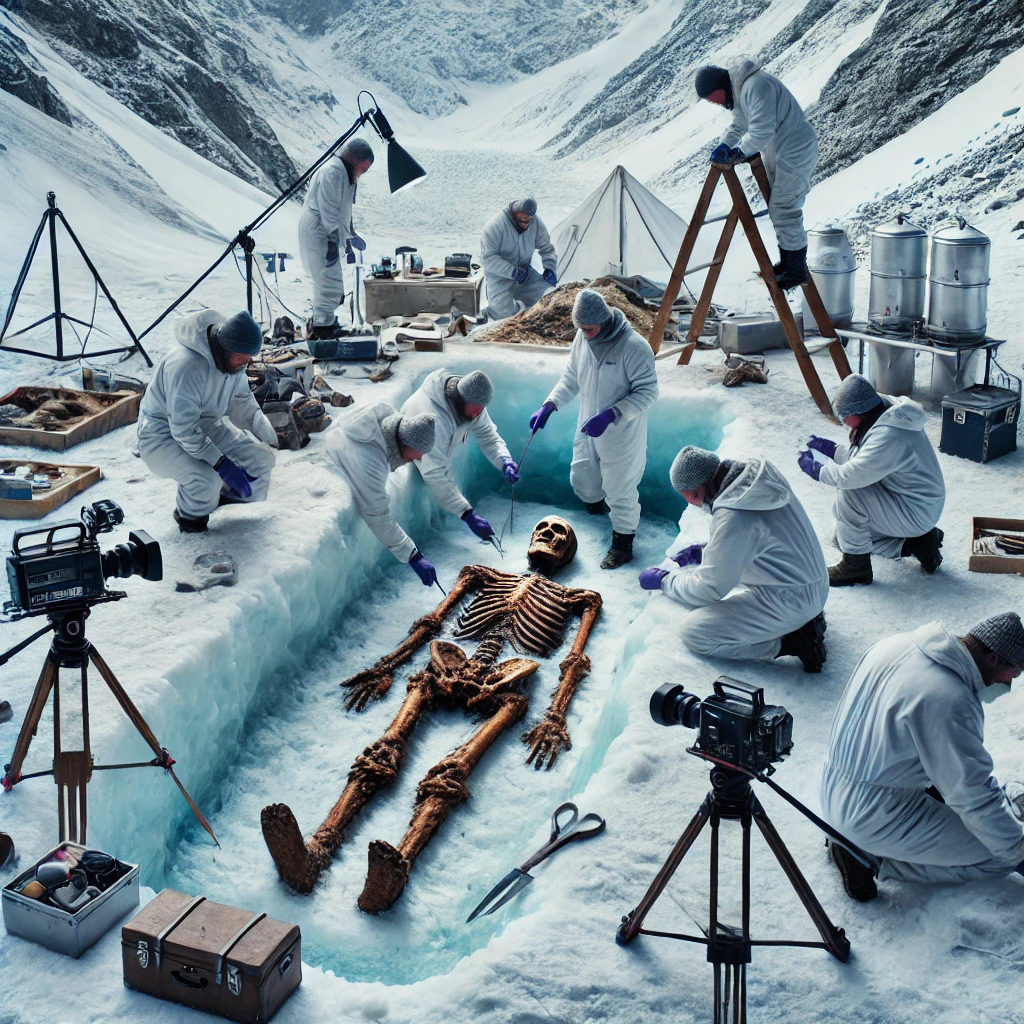On September 19, 1991, a remarkable archaeological discovery was made in the Ötztal Alps, straddling the Italian-Austrian border. German tourists stumbled upon a mummified human body, which would later be identified as Ötzi the Iceman. This extraordinary find, dating back to approximately 3300 BCE, offered unprecedented insights into prehistoric life and has since become one of the most significant archaeological discoveries of the 20th century.
The Discovery
The discovery of Ötzi the Iceman occurred under rather unusual circumstances. In the early autumn of 1991, Helmut and Erika Simon, German tourists hiking in the Ötztal Alps, encountered a partially exposed body in a glacier. Initially thought to be a modern mountaineer who had perished, the body was later determined to be far older. The high altitude and cold conditions had preserved the body remarkably well, leading to the realization that it was an ancient human mummy.
Upon discovering the body, the Simons contacted local authorities, who initially struggled to understand the significance of the find. The body was eventually recovered by a team of archaeologists and forensic experts, who began the process of uncovering its secrets. The preservation of the body, coupled with its location, hinted at the possibility of a significant archaeological find.

Scientific Analysis and Dating
Once the body was recovered, extensive scientific analysis was conducted to determine its age and origin. Radiocarbon dating, a technique used to determine the age of organic materials, was employed to ascertain the time period in which Ötzi lived. The results were astonishing: the body was dated to approximately 3300 BCE, placing it in the Copper Age, a period roughly 5,300 years ago.
Further analysis revealed that Ötzi was a man of about 45 years of age, standing approximately 1.60 meters (5 feet 3 inches) tall and weighing around 50 kilograms (110 pounds). His remains provided valuable insights into the health, diet, and lifestyle of people living in the Alps during this era. The well-preserved state of the body allowed researchers to study his clothing, tools, and even the contents of his stomach.
The Significance of the Discovery
The discovery of Ötzi the Iceman was groundbreaking for several reasons. Firstly, it provided a rare and detailed glimpse into the life of a prehistoric individual. The well-preserved nature of the body, along with the artifacts found alongside it, offered a unique opportunity to study the technology, clothing, and daily life of people living in the Copper Age.
The artifacts discovered with Ötzi included a copper axe, a bow and arrows, and a variety of tools and items that indicated his level of technological development and his role in his society. These findings provided valuable information about the technological advancements of the time and the lifestyle of the people who lived in the Alps.
Impact on Archaeology and History
Ötzi’s discovery had a profound impact on the field of archaeology and our understanding of prehistoric Europe. The detailed preservation of the Iceman’s body and belongings offered a snapshot of life during the Copper Age, challenging previous assumptions about the sophistication of prehistoric societies.
The study of Ötzi also contributed to the understanding of early human migration patterns, as the discovery highlighted the interconnectedness of ancient communities. The findings provided insights into trade routes, cultural exchanges, and the spread of technology across Europe.

The Iceman’s Legacy
The Iceman, now housed in the South Tyrol Museum of Archaeology in Bolzano, Italy, has become a symbol of prehistoric research and an important part of cultural heritage. His discovery has led to ongoing research and exhibitions that continue to educate the public about early human life.
The research surrounding Ötzi has also spurred interest in the broader field of archaeology, leading to increased exploration and study of other prehistoric sites. The techniques developed to analyze Ötzi’s remains, including non-invasive imaging and DNA analysis, have advanced the field and improved the methods used to study ancient human remains.
Cultural and Ethical Considerations
The discovery and study of Ötzi the Iceman have also raised cultural and ethical questions. The process of excavating and analyzing the body was conducted with respect for the individual and consideration of the implications of studying ancient human remains. The Iceman’s remains have been treated with care, and his discovery has prompted discussions about the ethical considerations involved in archaeological research.
The Global Impact
Ötzi’s discovery has had a global impact, capturing the interest of researchers and the public worldwide. The Iceman’s story has been featured in numerous documentaries, books, and articles, contributing to the popular understanding of prehistoric life and the importance of archaeological research.

Lasting Impact
The discovery of Ötzi the Iceman on September 19, 1991, remains one of the most significant archaeological finds of the 20th century. The insights gained from studying the Iceman have deepened our understanding of prehistoric Europe and the lives of people who lived thousands of years ago. The Iceman’s legacy continues to influence the field of archaeology and inspire further exploration and research into our ancient past.
In summary, the discovery of Ötzi the Iceman provided an unparalleled glimpse into the Copper Age and has had a lasting impact on our understanding of early human history. The well-preserved remains and accompanying artifacts have offered valuable insights into prehistoric life, technology, and culture, making the Iceman an enduring symbol of archaeological discovery and research.
